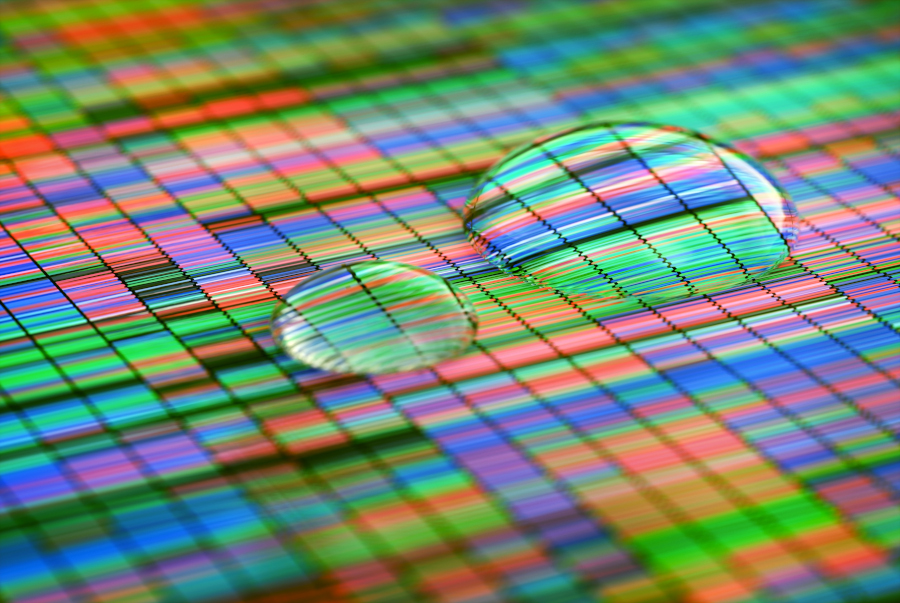Genomics got game

The next time you see some slack-jawed gamers riveted to a screen, hold your judgment — they could well be making an important contribution to scientific research. More specifically, they might be helping sequence the daunting array of genetic information found in our intestinal tracts, an environment called the microbiome, which is quickly become the next frontier for exploring human health.
If that sounds a bit far-fetched, the reality has been even more astonishing for the researchers benefiting from this initiative, which was pioneered by the McGill Centre for Bioinformatics more than a decade ago. A team there created a video game that asked players to solve puzzles made up of scattered, coloured tiles that must be arranged in orderly rows.
Behind this entertaining façade, however, those tiles actually represented nucleotide sequences, discrete bundles of biochemical data collected from an analysis of an organism’s complete genetic code, or genome. Computer algorithms typically assemble the proteins in each packet into their correct pattern, but the accuracy of this approach is limited. In addition, a single genomic analysis can generate millions of these sequences, making it all but impossible for any small team of scientists to check them in a reasonable amount of time.
A large group of enlisted “citizen scientists”, on the other hand, can make easy work of this challenge. By presenting the alignment problem to them as visual puzzles, thousands of individuals at a time can tackle the job of solving each one, or, from the scientific perspective, ensuring the genetic sequence has been accurately captured.
In fact, according to McGill Computer Science Professor Jérôme Waldispühl, who established the RNA Bioinformatics and Citizen Science project on campus, armies of gamers can outperform automated checking systems by 45-90 percent, in terms of speed and accuracy. Such results became the impetus to create Massively Multiplayer Online Science (MMOS), a Swiss consortium that turns gamers into citizen scientists.
“We still fight that misperception of games,” MMOS founder and CEO Attila Szantner explained at a recent event mounted by the non-profit organization Life Sciences Ontario. “Many people still think of games as some kind of nerdy pastime, which cannot be further from the truth. This prevents a lot of very interesting, fruitful collaborations between academia, academic research, and research in general.”
He described the most recent MMOS undertaking, in collaboration with Waldispühl’s group and the recently established Montreal studio of Gearbox Entertainment, which inserted a scientific invitation into one of the company’s most successful products, Borderlands 3. The game, an outstanding example of a fast-paced, violent “shooter” with participants from all over the world, now includes a retro-look arcade game within it, called Borderlands Science.
A souped-up version of the tile-matching game originally developed at McGill, Borderlands Science comes complete with an introductory video hosted by Big Bang Theory alumnae and Jeopardy host (and actual scientist) Mayim Bialik. Her colourful account of the science at stake is meant to entice gamers into helping out, which, according to Gearbox Montreal Studio head Sébastien Caisse, took very little effort.
“We launched on April 7, 2020, and got some 6 million puzzle solutions in a matter of 24 hours, through more than 150,000 active players,” he said. To date, he added, more than 3.6 million active players use Borderlands Science, which has completed more than 125 million puzzles.
“It works,” he concluded, pointing to a template that could be used with a variety of number-crunching scientific endeavours, in the life sciences and astronomy. “There’s a lot of opportunity there.”
This gaming venture complements the citizen science that is generating all this genomic data. American Gut, an open database made up of microbiome specimens from the bodies of more than 10,000 individuals, has grown steadily since it was created in 2012. It promises to become a valuable reference tool for future work on the many different bacteria — most of them non-human — that inhabit our innards, but only if this information is as accurate as possible, which Borderlands Science accomplishes.
When asked about why a private firm like Gearbox would get involved in this kind of academic effort, Caisse pointed to professional pride.
“As craftsmen, we love to entertain people,” he said. “But it is great to think that our craft can also lead to making the world better. It makes for a group of developers who find more meaning in what they do, and it also attracts that type of developer.”
As for the gamers, he added, they have not only risen to the call to overcome a scientific obstacle, but would welcome more. “You’ve opened the door, however slightly, to scientific literacy for some people. You’re trying to inspire people with this.”
Waldispühl, who maintains a forum for this sizable international community of Borderlands Science gamers, confirmed that conclusion. As for members of the scientific community, who had initially hoped that Borderlands Science might produce results within a few weeks, they are still reeling from witnessing a huge volume of genetic sequencing data finalized in a matter of days or hours.
“There is something really crazy going on here,” he said.
R$
| Organizations: | |
| People: | |
| Topics: |
Events For Leaders in
Science, Tech, Innovation, and Policy
Discuss and learn from those in the know at our virtual and in-person events.
See Upcoming Events
You have 0 free articles remaining.
Don't miss out - start your free trial today.
Start your FREE trial Already a member? Log in
By using this website, you agree to our use of cookies. We use cookies to provide you with a great experience and to help our website run effectively in accordance with our Privacy Policy and Terms of Service.





